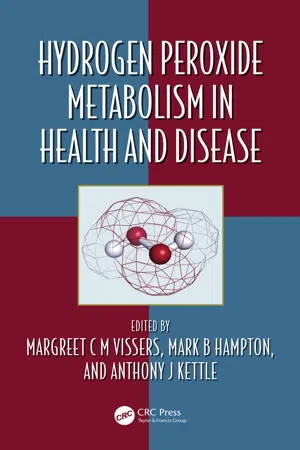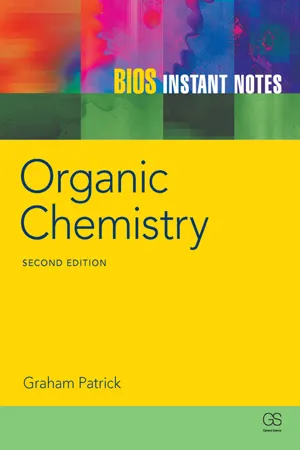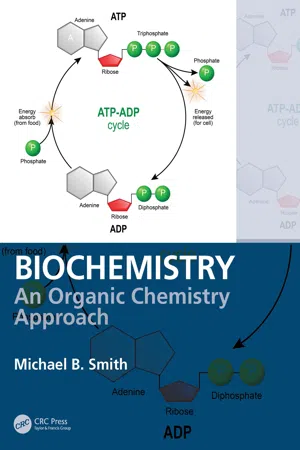Chemistry
Thiol Reactions
Thiol reactions involve the chemical reactions of compounds containing a sulfhydryl group (–SH). Thiol groups are highly reactive and can undergo various types of reactions, including oxidation, reduction, and formation of disulfide bonds. These reactions are important in organic synthesis, biochemistry, and industrial processes due to the unique properties and reactivity of thiol compounds.
Written by Perlego with AI-assistance
Related key terms
Related key terms
1 of 4
Related key terms
1 of 3
4 Key excerpts on "Thiol Reactions"
- Margreet C M Vissers, Mark Hampton, Anthony J. Kettle(Authors)
- 2017(Publication Date)
- CRC Press(Publisher)
2 and peroxynitrite that can occur either directly or indirectly, that is, through the generation of secondary oxidants. Diffusion properties and the expected half-lives of both oxidants in the presence of their main biological targets in the cytosol and mitochondrial matrix will be analyzed.Biologically Relevant Thiol-Containing Compounds
In biological systems, thiol functional groups can be found as part of low-molecular-weight (LMW) compounds and in protein Cys residues. Most living organisms contain millimolar concentrations of LMW thiols that play key biological functions, such as to keep an intracellular reducing environment, to provide electrons for redox enzymes, to react with electrophilic compounds, and to detoxify xenobiotics. In most eukaryotic cells and Gram-negative bacteria, these actions are performed by the tripeptide glutathione (GSH, gamma-glutamyl l -cysteinylglycine) [42 ], which is kept reduced by the flavoenzyme glutathione reductase at the expense of nicotinamide adenine dinucleotide phosphate (NADPH) [43 ]. Some microorganisms have other LMW thiols, such as trypanothione (TSH2 , bis-glutathionylspermidine) in Kinetoplastids; mycothiol (MSH, acetyl cysteine-glucosamine-myo-inositol) in Actinomycetes; bacillithiol (BSH, cysteine-glucosamine-malate) in Firmicutes [44 ,45 ,46 ,47 ]; coenzyme A in some spirochetes [48 ], for which specific disulfide reductases have been reported. Moreover, coenzyme A plays important metabolic roles in living systems [49 ]. In turn, free dihydrolipoic acid (DHLA) or its oxidized form, lipoic acid (LA), are almost undetectable in plasma and tissue of animals (unless they are orally supplemented) and are found as a lipoamide cofactor bound to dehydrogenase complexes such as mitochondrial pyruvate dehydrogenase and alpha-ketoglutarate complexes [50 ,51 ]. Ovothiols A-C (particularly abundant in marine invertebrate eggs and some trypanosomatids) and ergothioneine (produced by fungi and actinomycetes) are mercaptoimidazol-containing compounds [52 ,53 ,54 ]. Although mammals cannot synthesize ergothioneine, it is present in many dietary sources. A highly specific transporter in mammalian tissues allows it to be widely distributed [55 ,56 ]. These thiols are considered to play antioxidant functions, but enzymatic routes relying on them, including recycling systems, have not been reported so far [57 ,58 ]. A recent report indicated that at least some of the beneficial actions of ergothioneine are mediated through the upregulation of specific protein deacetylases [59 ]. Cysteine is another LMW thiol. The intracellular concentration of free Cys is quite low (reduced form: 125 μM and oxidized form: 31 μM in human HT29cells) and it is much more abundant as a component of proteins and glutathione [60 ]. It is, however, the more abundant LMW thiol in plasma where glutathione concentration is extremely low ([reduced Cys] = 8–10 μM and [GSH] = 4.7 μM) [61 ]. Moreover, many LMW thiol-containing compounds are used as drugs, examples being N-acetyl cysteine, antiarthritic drugs such as d -penicillamine, some inhibitors of metallo-β-lactamases, and inhibitors of angiotensin-converting enzyme such as captopril [62 ,63 ,64 ,65 ]. The reactions of many of these LMW thiols with oxidants formed in vivo, such as H2 O2 and peroxynitrite, explain some of their antioxidant roles (Table 3.1 ). Finally, hydrogen sulfide (H2 S/HS− ), which has a pKa of 7 [66 ], is produced in different organisms, including mammals, where it participates in signaling functions [67 ,68 ]. Although hydrogen sulfide is not properly a thiol, it shares some of their chemical properties, and its reactions with different peroxides including H2 O2 and peroxynitrite have also been investigated. The reported rate constants have also been listed in Table 3.1 for comparative purposes [69 ,70 ]. Of note, the intrinsic reactivity of HS− is one order of magnitude lower than those of thiolates [70- eBook - ePub
- Graham Patrick(Author)
- 2004(Publication Date)
- Taylor & Francis(Publisher)
Thiols form extremely weak hydrogen bonds — much weaker than alcohols — and so thiols have boiling points which are similar to comparable thioethers and which are lower than comparable alcohols. For example, ethanethiol boils at 37°C whereas ethanol boils at 78°C.Low molecular weight thiols are notorious for having disagreeable aromas.Reactivity
Thiols are the sulfur equivalent of alcohols (RSH). The sulfur atom is larger and more polarizable than oxygen which means that sulfur compounds as a whole are more powerful nucleophiles than the corresponding oxygen compounds. Thiolate ions (e.g. CH3 CH2 S− ) are stronger nucleophiles and weaker bases than corresponding alkoxides (CH3 CH2 O− ). Conversely thiols are stronger acids than corresponding alcohols.The relative size difference between sulfur and oxygen also means that sulfur' s bonding orbitals are more diffuse than oxygen' s bonding orbitals. This results in a poorer bonding interaction between sulfur and hydrogen, than between oxygen and hydrogen. As a result, the S–H bond of thiols is weaker than the O–H bond of alcohols (80 kcal mol−1 vs. 100 kcal mol−1 ). This in turn means that the S–H bond of thiols is more prone to oxidation than the O–H bond of alcohols.Reactions
Thiols are easily oxidized by mild oxidizing agents such as bromine or iodine to give disulfides (Figure 2 ).Thiols react with base to form thiolate ions which can act as powerful nucleophiles (Section L6 ; Figure 3 ).Figure 2. Oxidation of thiols. Figure 3. Formation of thiolate ions. - eBook - ePub
- Greg T. Hermanson(Author)
- 2013(Publication Date)
- Academic Press(Publisher)
Section 1 ). Once initiated, most of these reactions are rapid and occur in high yield to give stable thioether or disulfide bonds.2.1 Haloacetyl and Alkyl Halide Derivatives
Three forms of activated halogen derivatives can be used to create sulfhydryl-reactive compounds: haloacetyl, benzyl halides that react through a resonance activation process with the neighboring benzene ring, and alkyl halides that possess the halogen β to a nitrogen or sulfur atom, as in N- and S-mustards. In each of these compounds, the halogen group is easily displaced by an attacking nucleophilic substance to form an alkylated derivative with loss of HX (where X is the halogen and the hydrogen comes from the nucleophile). Haloacetyl compounds and benzyl halides typically are iodine or bromine derivatives, whereas the halo-mustards mainly employ chlorine and bromine forms (see Chapter 5 , Section 10 , for examples of homobifunctional reagents that employ reactive halogen groups). Iodoacetyl groups have also been used successfully to couple affinity ligands to chromatography supports (Chapter 15 , Section 2.2 ).Although the primary utility of active halogen compounds is to modify sulfhydryl groups in proteins or other molecules, the reaction is not totally specific. Iodoacetyl (and bromoacetyl) derivatives can react with a number of functional groups within proteins: the sulfhydryl group of cysteine, both imidazolyl side chain nitrogens of histidine, the thioether of methionine, and the primary ε-amine group of lysine residues and N-terminal α-amines (Gurd, 1967 ). The relative rate of reaction with each of these residues is generally dependent on the degree of ionization and thus the pH at which the modification is performed. The exception to this rule is methioninyl thioethers which react rapidly at nearly all pH values above 1.7 (Vithayathil and Richards, 1960 ). The only reaction resulting in one definitive product is that of the alkylation of cysteine sulfhydryls, giving the carboxymethylcysteinyl derivative (Cole et al. , 1958) (Reaction 3.18) . Histidine groups may be modified at either nitrogen atom of their imidazolyl side chain, thus producing the possibility of either mono-substituted or di-substituted products (Crestfield et al. , 1963). With primary amine groups such as in the side chain of lysine residues, the products of the reaction are the secondary amine, monocarboxymethyllysine, or the tertiary amine derivative, dicarboxymethyllysine. Methionine thioether groups give the most complicated products, some of which rearrange or decompose unpredictably. The only stable carboxy derivative of methionine is where the terminal methyl group is lost to form carboxymethylhomocysteine, the same product as the reaction of iodoacetate with homocysteine. For a complete illustration of these reactions, see Chapter 2 , Section 4.2 - eBook - ePub
Biochemistry
An Organic Chemistry Approach
- Michael B. Smith(Author)
- 2020(Publication Date)
- CRC Press(Publisher)
Epoxides are very reactive to many nucleophiles, although epoxides do not generally react directly with water or with alcohols. The reaction of an epoxide and NaOH will lead to a diol. In the presence of a strong acid catalyst, an epoxide will react first to form an oxonium ion, and then with the weak nucleophile to open the three-membered ring. The reaction of 2,2-dimethyloxirane with an acid catalyst will generate oxonium ion, which opens in the aqueous medium to give the more stable tertiary carbocation. The oxygen atom of water attacks the positive carbon of this intermediate to yield oxonium ion and loss of a proton gives 2-methylpropane-1,2-diol and regenerates the acid catalyst.Sulfides react with alkyl halides to give the corresponding sulfonium salt. The reaction of diethyl sulfide and iodomethane, for example, gave the sulfonium iodide. Such reactivity is possible because of the extra valence available to the sulfur atom, due to the presence of d-orbitals. This type of sulfonium salt was observed with S -adenosyl methionine (see above and in Figure 3.4 ), and the stability of the sulfide accounts for the fact that S -adenosyl methionine is a methylating agent: i.e., a nucleophile can react with the methyl group on sulfur and displace the sulfide moiety as a leaving group. There is also a three-membered ring thioether called an episulfide. As expected, nucleophiles can open the strained three-membered sulfide ring to give the corresponding thiol.An amine with a three-membered ring is known as an aziridine. Nucleophiles can react with this strained system to give the amine. An example of formation of an aziridine in a biochemical pathway involves bis(2-chloromethyl)sulfide (ClCH2 CH2 SCH2 CH2 Cl). Substitution reactions occur in many biological processes. Bis(2-chloromethyl)sulfide, otherwise known as mustard gas
Index pages curate the most relevant extracts from our library of academic textbooks. They’ve been created using an in-house natural language model (NLM), each adding context and meaning to key research topics.
Explore more topic indexes
Explore more topic indexes
1 of 6
Explore more topic indexes
1 of 4



